Ten villages to visit in Basilicata
1. Craco
The present-day municipality of Craco is a modern town of just 700 inhabitants who reside in the hamlet of Craco Peschiera, but the real attraction is the historic center, now a ghost town: it is in fact uninhabited, due to a landslide that in 1963 led the authorities to evacuate the nearly 2,000 inhabitants of the ancient hamlet, of medieval origin. The few remaining inhabitants abandoned Craco for good after the 1980 Irpinia earthquake. This forced evacuation ensured that the village remained intact, so much so that today it largely retains its ancient appearance and has become the set of countless international films. Among the ruins, one can admire the ancient mother church, the 15th-century Palazzo Carbone (remodeled in the 18th century), and the tall tower of Palazzo Maronna, visible even from afar.
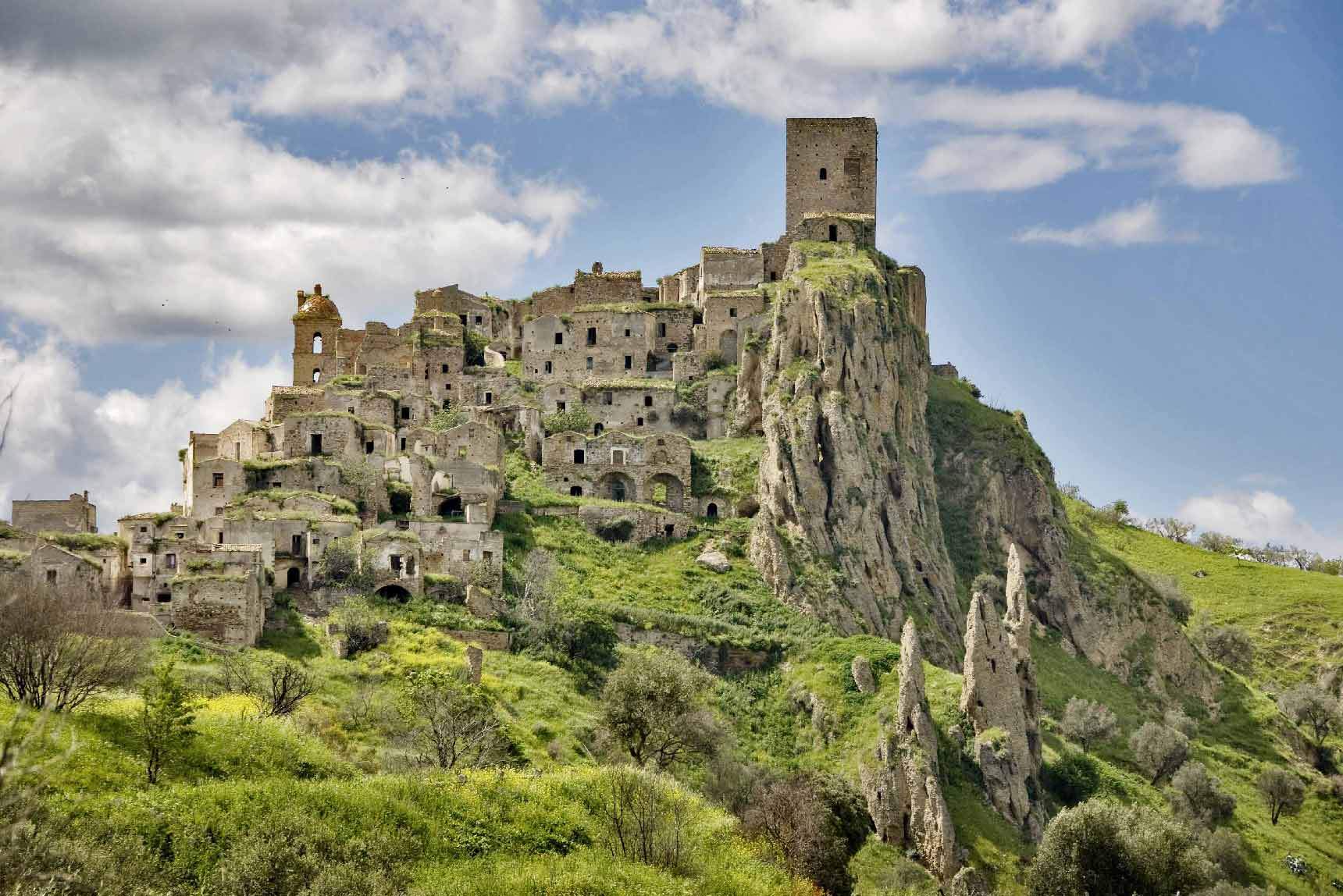 |
| View of Craco |
2. Acerenza
It is located on a hilltop more than eight hundred meters above sea level and its origins go back to ancient times: it is already mentioned in Latin works. As early as the fifth century AD it became the seat of a diocese, which it has retained to this day. Because it is situated in a connecting area to Puglia, it was long disputed in the past. Like many other towns in the region, Acerenza was Longobard, Byzantine, Norman, Swabian, Angevin, and Aragonese, and a for centuries a fief of different families. Acerenza is also known as “the cathedral city,” for its spirituality, and for the fact that the majestic Cathedral is the monument that dominates it from above: dedicated to Santa Maria Assunta, it is a mighty Romanesque building dating back to the 11th century. Also worth seeing are the Church of St. Laviero the Martyr, the Palace of the Old Curia (located inside what was once the medieval Castle), and Palazzo Gala, an 18th-century building.
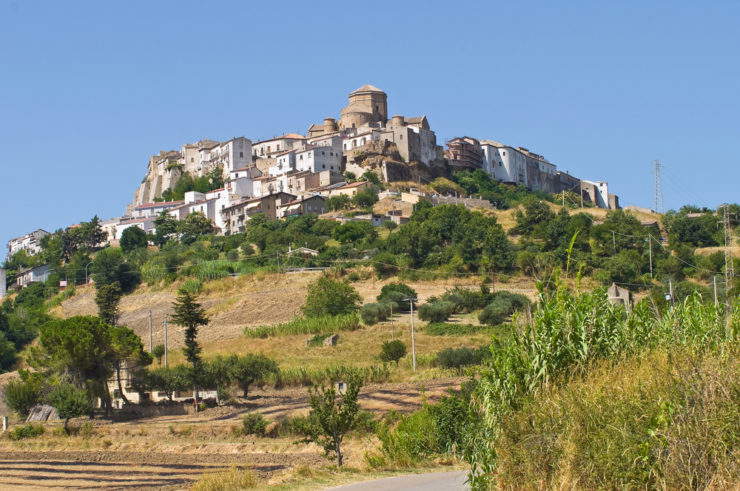 |
| View of Acerenza |
3. Irsina
An ancient Norman village, Irsina, the region’s second largest municipality (after Matera) is located on a hill rising above the Bradano valley, in the middle of woods and wheat fields. One of the curiosities of the place are the “bottini,” underground tunnels that were used to collect rainwater. Worth seeing are the Cathedral of Santa Maria Assunta, thirteenth-century but rebuilt in the eighteenth century (the bell tower, however, is still in the Gothic style), and the various churches that house canvases by Andrea Miglionico, an important seventeenth-century painter of the place. The former convent of St. Francis, one of the city’s largest monuments, houses the Janora Civic Museum, which gathers numerous objects (including many archaeological finds) that tell the history of the place. The crypt of St. Francis also houses frescoes from the 14th century.
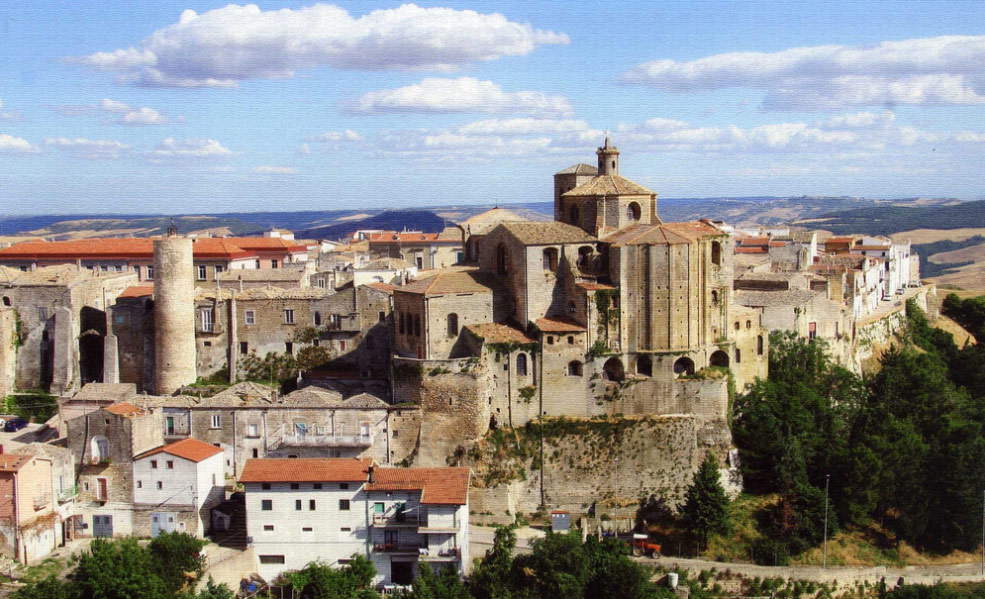 |
| View of Irsina |
4. Venosa
It is the ancient Venusia of the Romans (the name of the locality seems to be connected with that of the goddess Venus in Latin), and is known as the birthplace of the great poet Horace, who was born here in 70 AD. A Samnite city that became a Roman colony, it already welcomed in Roman times what is considered by many to be the oldest Jewish community settled in Italy (the Jewish catacombs, dated between the 3rd and 7th centuries AD, remain). In the Middle Ages it was sacked by the Saracens and then became a Norman, then Swabian and finally Angevin city. Numerous vestiges of the past can be found in the city. These include the Archaeological Park with its amphitheater and domus, the Holy Trinity Complex (a very ancient church complex, dating back to early Christian times and then expanded under the Lombards and Normans), the austere Co-cathedral of St. Andrew, and the baroque Church of Purgatory. Also in the center is the so-called “House of Horace,” actually dating back to the 2nd century AD, reconstructed using experimental archaeological techniques. From the Angevin period is the severe Angevin Fountain, while later is the Aragonese Castle, built in 1470.
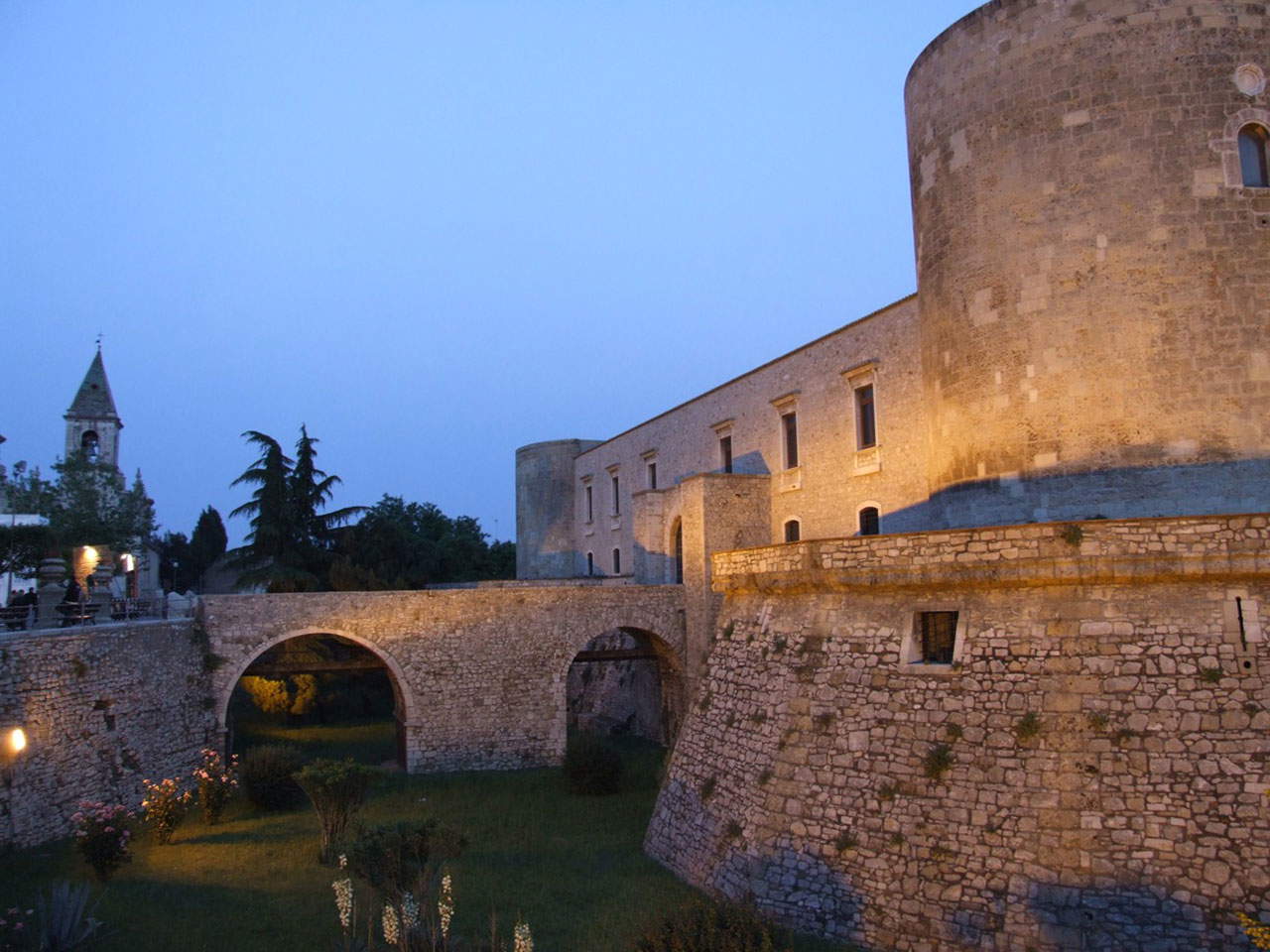 |
| The Castle of Venosa |
5. Maratea
This is the only town in Basilicata bathed by the Tyrrhenian Sea, since it overlooks the Gulf of Policastro. The historic town is on a hill three hundred meters above sea level and has Roman origins, although it developed in the Middle Ages, when Maratea, like most of the towns in Basilicata, was Norman, then Angevin, and then Swabian. In 1860 it was one of the main centers of the so-called “Lucanian Uprising,” a series of uprisings that broke out in August of that year against the Bourbons of the Two Sicilies and in favor of annexing the region to the future kingdom of Italy. Maratea is also known as the “city of 44 churches,” because of the many houses of worship in the village, starting with the two main ones, the Pontifical Basilica of San Biagio, and the mother church of Santa Maria Maggiore. The craggy coastline is dotted with numerous coastal towers that had, in ancient times, sighting functions in anti-Corsara: they date back to the 16th century. The seaside hamlet, Marina di Maratea, is a small seaside resort. Finally, see the Statue of the Redeemer, which towers on Mount San Biagio: it is about 22 meters high.
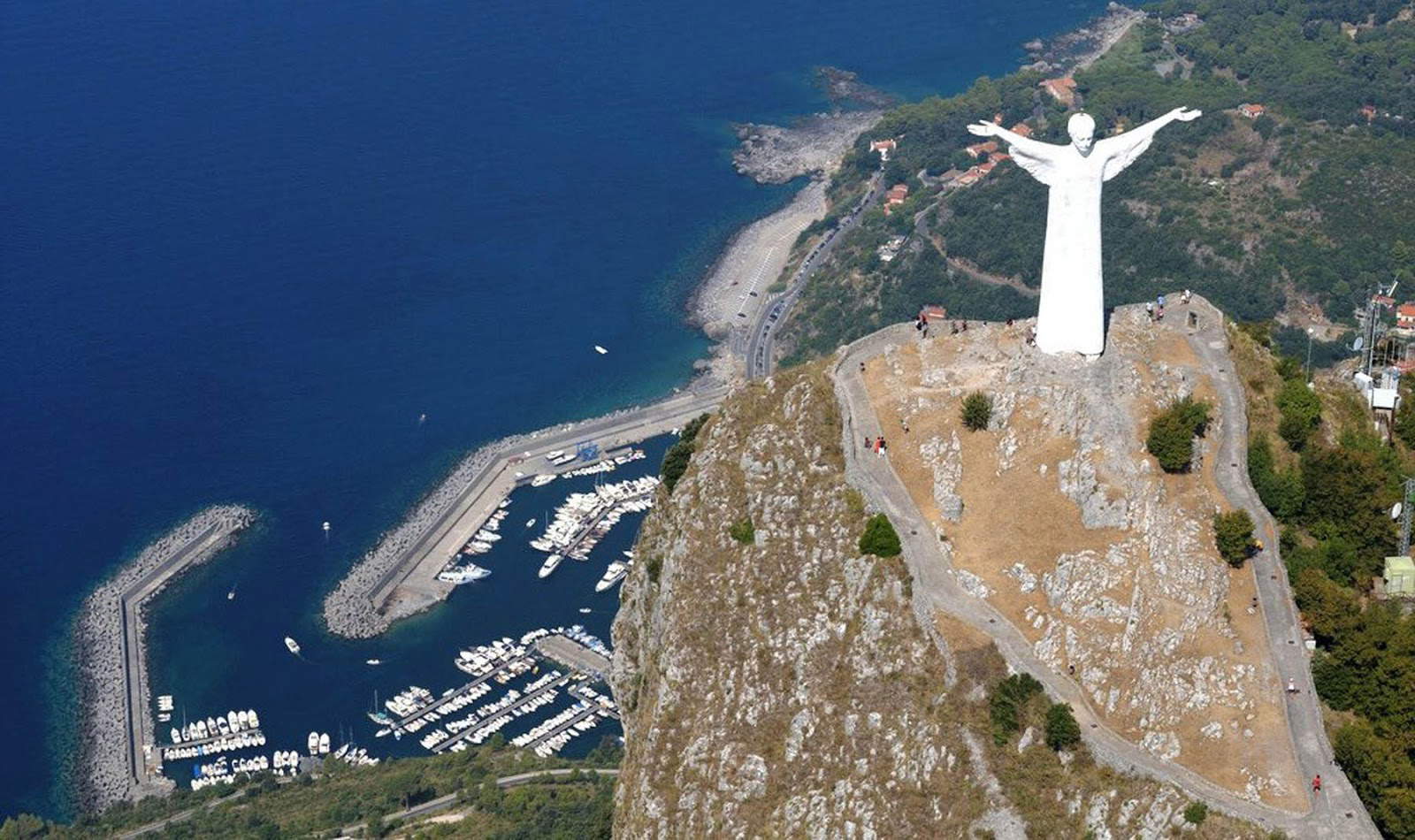 |
| View of Maratea, with the statue of the Redeemer in the foreground |
6. Pietrapertosa
Located more than 1,000 meters above sea level, Pietrapertosa, at the center of the Lucanian Dolomites Park, is the highest municipality in Basilicata. The village is built on rock and its origins would seem to date back to the 8th century B.C., when there was a Pelasgian settlement in the area. In the Middle Ages it was Norman and Angevin, and some of its most interesting monuments date from that time, such as the Castle and the chapel of San Cataldo, the latter dating from Norman times. The charm of the village is preserved among the narrow streets of Arabata, the neighborhood dating back to the time of Arab rule, made up of narrow, steep alleys that climb along rock walls. Numerous ancient works are preserved in the convent and church of St. Francis.
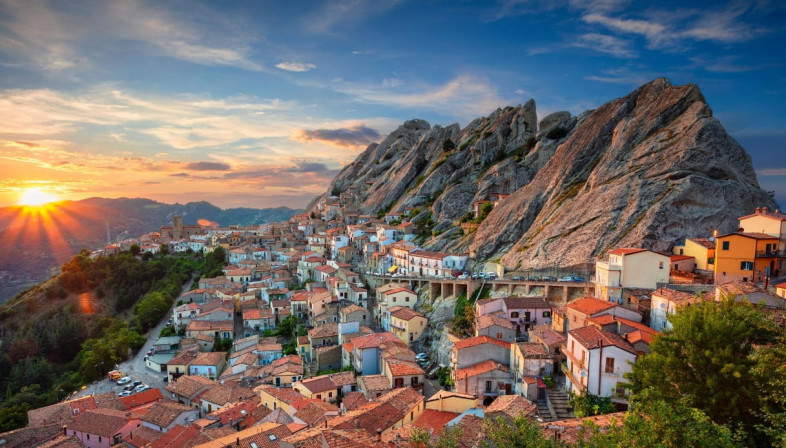 |
| View of Pietrapertosa |
7. Policoro
With almost eighteen thousand inhabitants, it is the third largest municipality in the region by population, after the two provincial capitals, Potenza and Matera. Today’s center rises a short distance from ancient Heraclea, one of the most important Magna Graecia cities in the area: the archaeological site and the National Museum of the Siritide tell its long history. The town, an important seaside resort and departure point for nature excursions, is above all modern: its development, which from a village of a few souls has made it a fairly populous center, dates from the 1960s, when Policoro attracted the inhabitants of the hinterland who were beginning to depopulate.
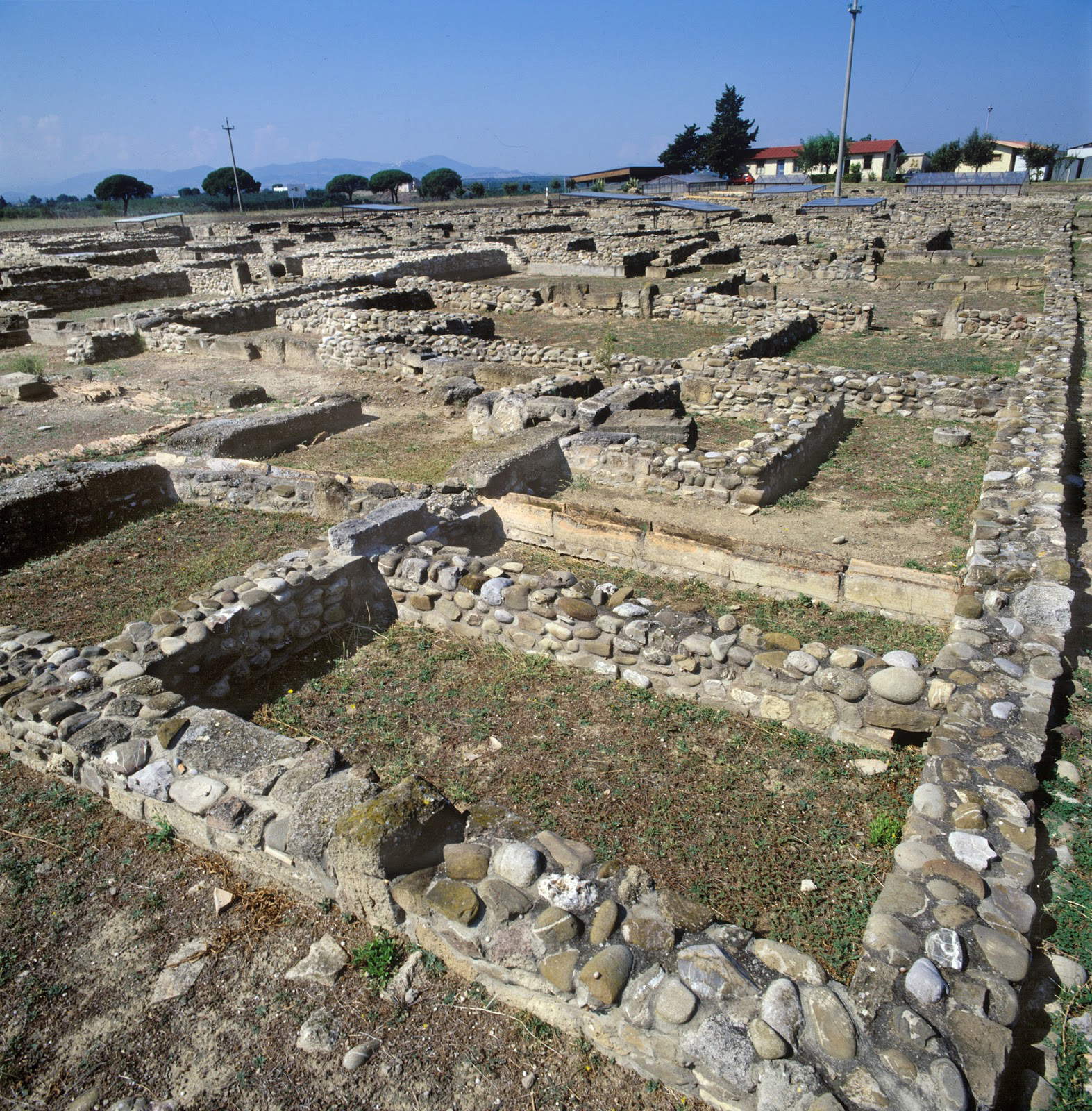 |
| The site of Eraclea |
8. Viggianello
The ancient Castrum Byanelli was a Roman stronghold on the Appian Way, while the present village is of medieval origin, probably dating back to the 9th-10th centuries, although the first mention of “Vineanellum” is from 1079. It was for a long time a fief of the Sanseverino family, which enriched it with monuments: the convent of St. Anthony, the chapel of the Assumption, and above all the Castle, which towers over the town and was transformed by the Senseverino into a noble residence in the 16th century, date back to the Renaissance. Then there are many churches of Byzantine origin, such as that of St. Sebastian, remodeled, however, in the 15th century. Not to be missed are the numerous aristocratic palaces that line the streets of the village.
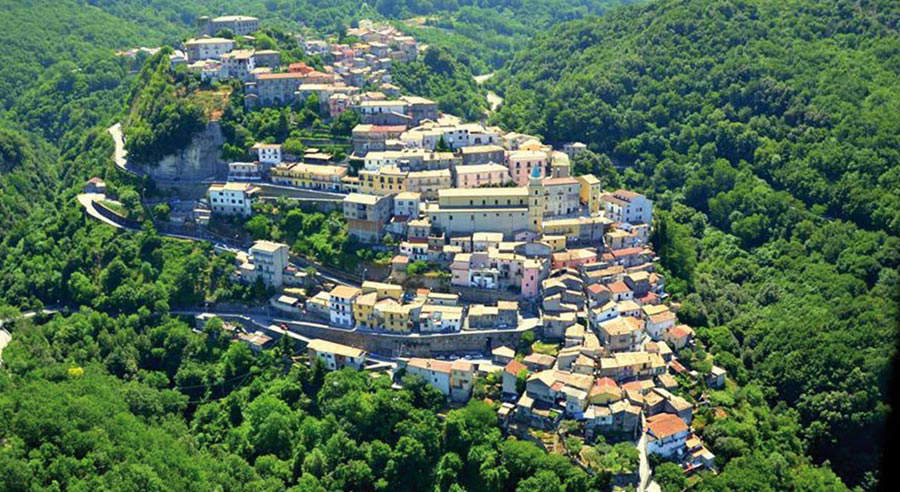 |
| View of Viggianello |
9. Metaponto
A coastal hamlet of the municipality of Bernalda, Metapontum is known everywhere for its ancient monuments: the ancient Metapontion was in fact a flourishing Greek colony, founded in the 7th century B.C., among the main cities of southern Italy at the time of Magna Graecia. The city was completely abandoned as early as Roman times: in the Middle Ages it was the villages of the immediate hinterland that developed to its detriment. Today Metapontum is a seaside resort with long sandy beaches, but history lovers can visit the archaeological site and the National Museum of Metapontum: the temples of Hera, Lycian Apollo, Demeter and Aphrodite remain, as well as the “Palatine Tables,” the remains of a Doric temple from the 6th century BC. Some ruins of the theater also remain.
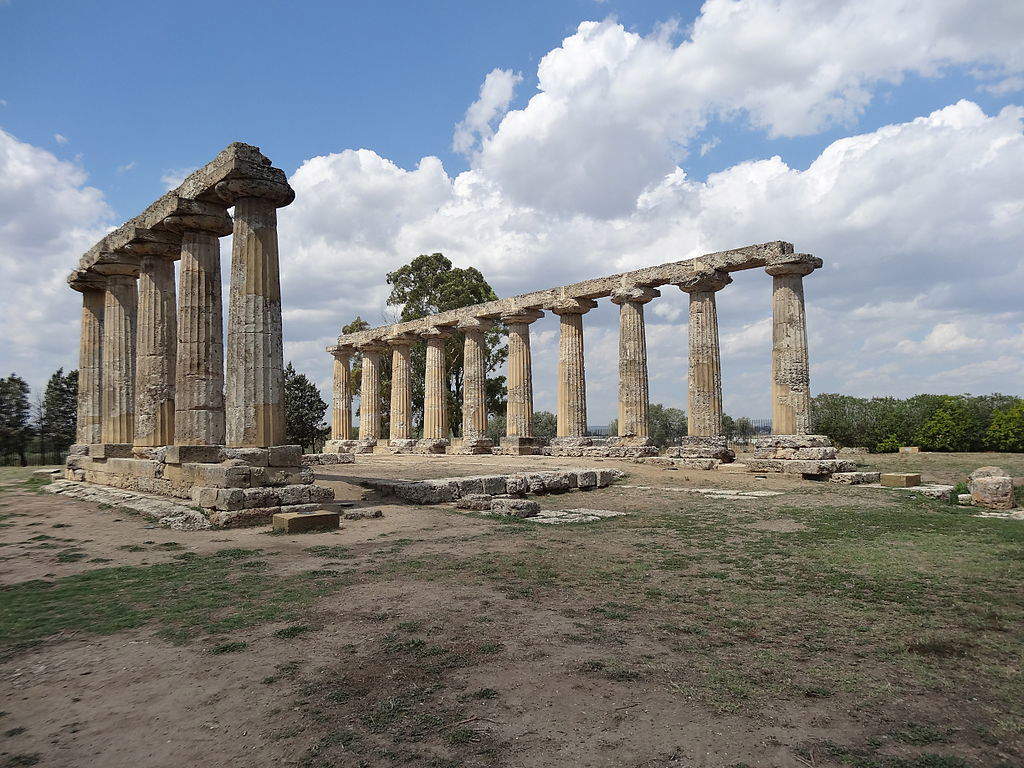 |
| The temple known as the “Tavole Palatine” |
10. Castelmezzano
Nestled in the mountains, in the Lucanian Dolomites Park, it lies a short distance from Pietrapertosa, its “next door neighbor.” Castelmezzano was born during the Middle Ages, when invasions by Saracen pirates forced the inhabitants to leave the coastal plain and take refuge in the mountains. The name of the village derives from that of the castle (the “Castrum Medianum,” or “Castle in the Center”) that the Normans erected there in the 13th century. Some ruins remain of the castle today: see the historic palaces (starting with the Ducal Palace of the De Lerma family, the last lords of Castelmezzano) and the many churches such as that of the Holy Sepulchre, of medieval origins but enlarged and remodeled in later centuries.
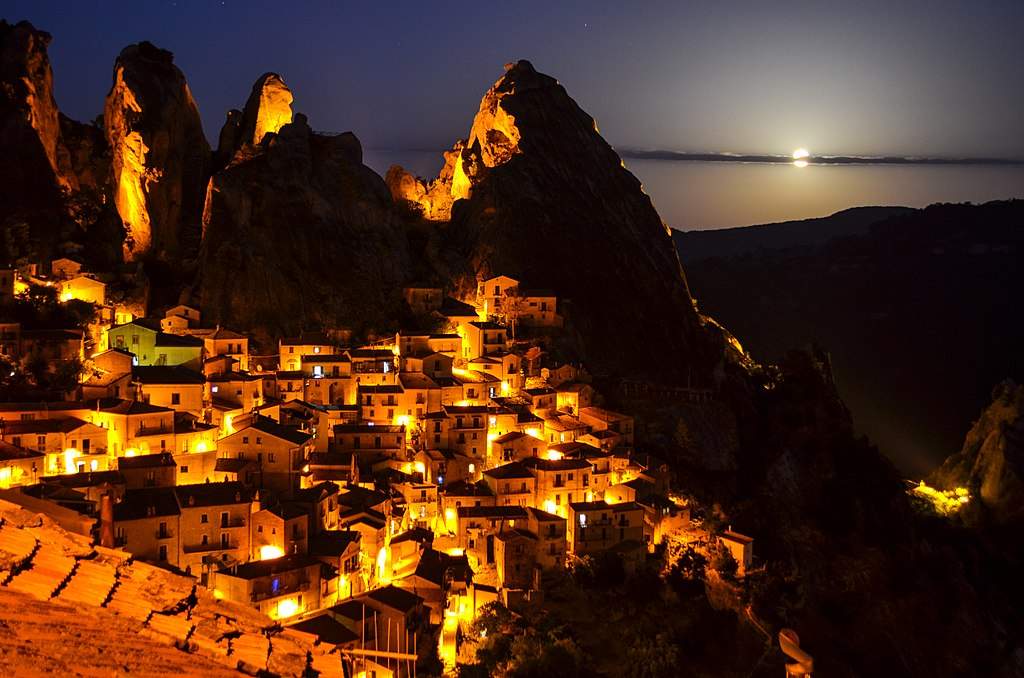 |
| View of Castelmezzano. Ph. Credit Lorenzo Palazzo |
 |
| Ten villages to visit in Basilicata |
Warning: the translation into English of the original Italian article was created using automatic tools. We undertake to review all articles, but we do not guarantee the total absence of inaccuracies in the translation due to the program. You can find the original by clicking on the ITA button. If you find any mistake,please contact us.


























